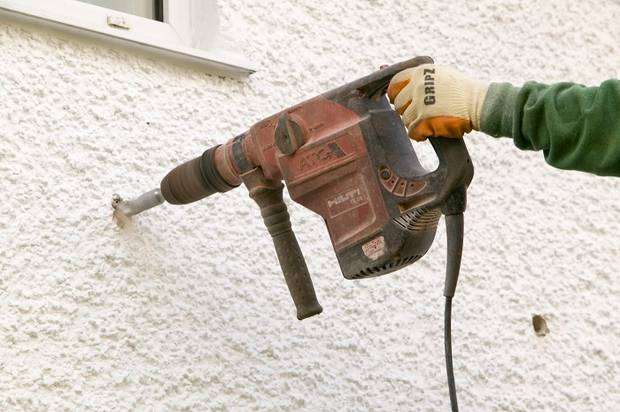Many homes have insulation in the roof and under flooring. But what about the heat that is escaping through walls?
Wall insulation makes a big difference to the comfort and warmth of your home, says Christian Hoerning, senior sector technology analyst at the Energy Efficiency and Conservation Authority (EECA).
About 700,000 houses in this country have no insulation in the walls, representing a significant opportunity for improvement, according to BRANZ. And insulated walls make homes warmer and healthier to live in, and they stop mould growing.
There are two main ways to get the insulation into the walls. The most common method for retrofitting wall insulation involves removing the wall linings and adding insulation from the interior, says BRANZ senior scientist Greg Overton.
Start your property search
That allows easy access to check for any dampness, borer, mould or rotten wood, which needs to be dealt with before insulation is installed.
It's important to follow best practice set out in the New Zealand Standard for installing insulation.
In older houses which may not have a wall underlay, BRANZ's preferred method is to keep a 20mm gap between the wall cladding and the insulation, says Overton. Having this gap reduces the risk of transferring water to the inside.
Hoerning says that even if you're doing the work yourself, it's a good idea to get a licensed building practitioner to check the cavity before the insulation is installed to ensure that there is suitable building paper covering the entire area — and that there are no tears or other damage that could let in moisture.
If not, you will need to retrofit building paper from the inside to reduce the chances of water getting into the insulation material.

Removing wall linings can be prohibitively expensive, so BRANZ is exploring alternatives for linings on retrofits.
One alternative is the drill-and-fill method.
"Here holes are drilled in the wall and loose-fill insulation is blown into the wall space," says Overton. "BRANZ research is exploring how this method can be used in cases where wall underlay is not present and how best to follow the principles of New Zealand Standard for installing insulation."
For this method, installers drill through the outside wall and building paper or through the inside lining and then fill the cavity.
Both methods require some redecoration and remedial work to be completed.
Hoerning recommends employing a building surveyor before having drill and fill insulation to ensure the cavity is dry and free from mould, damp, rot and borer.
Whether or not the insulation is injected/blown from the outside or the inside, it may be difficult to determine if the lining is in good repair through the drill holes. One way to find out is to put cameras into the holes to check.
Damp comes from water ingress if the outside cladding or flashing is not in good condition or from hidden leaks in the plumbing.
Sometimes, for example, rain can pass through brick veneer, or moisture generated within the building from drying clothes or cooking can also get into the wall insulation or where there is inadequately ventilated subfloor space where the ground is poorly drained.
This is one of many reasons to consider getting an expert to do the job rather than muddling through a DIY job.
No matter what method you are using to retrofit insulation you may also need an electrician to check the wiring within the walls. Insulation is thermal and undersized wires can be hot, which could be a lethal combination.
It's also important to check with your local council and see if the work needs council building consent.
In Auckland, for example, you will need to apply for a building consent if you are installing insulation in an external wall or an internal wall that is a fire separation wall.
You don't need a building consent or resource consent for other insulation projects.
The consent/inspection process costs money, which annoys some home owners. But there are good reasons for it.
Retrofitted insulation can also affect the structural performance of homes if moisture accumulates in the wall cavity and air is not able to circulate.
If the insulation gets wet, this could cause the growth of mycotoxins, a type of harmful toxic mould. It can also speed the rotting of structural timbers.
It's not the insulation itself that needs the consent, but the removing and reinstating of structural wall linings or drilling holes through studs, which require compliance with the Building Code clause B1.3.1.
That means there are no specific requirements for R-value of the retrofitted wall; although there is no doubt that retrofitted insulation does improve the thermal envelope.
Make sure that the insulation used is the one specified in the consent, says Mike O'Neill of ITM.
Substitution of insulation materials is one of the common reasons why building inspections fail, he says.


















































































